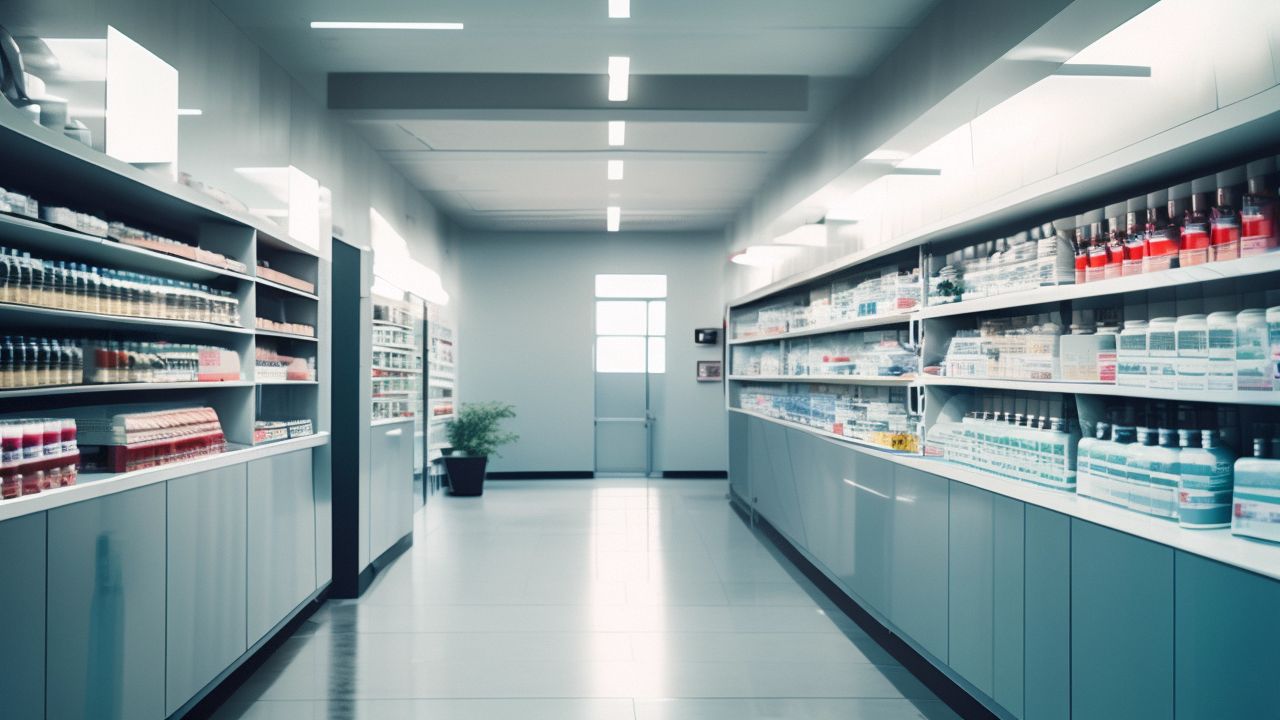7 key points for introducing sulfonylurea drugs
Table of Contents
There are many types of sulfonylurea drugs, which share a common chemical structure of R1-SO4NHCONH-R2, which is the common basis for their hypoglycemic effects. By altering the R1 and R2 groups in their chemical structure, a series of new sulfonylurea hypoglycemic drugs have been developed. The types of R1 and R2 groups also determine the strength and duration of the hypoglycemic effect.

1.Mechanism of Action of sulfonylurea drugs:
- Stimulate pancreatic beta cells to release or secrete insulin, but do not stimulate insulin synthesis.
- Enhance the sensitivity of pancreatic beta cells to stimuli, such as enhancing insulin release in response to high blood sugar.
- Improve the sensitivity of insulin receptors on the cell membranes of peripheral tissues, prevent hepatic glucose output, promote hepatic glycogen synthesis, inhibit glycogenolysis and gluconeogenesis.
- Lower lipid levels, improve blood viscosity. Some drugs have been shown in experiments to reduce blood viscosity, decrease platelet adhesion and aggregation, improve lipid metabolism, but their efficacy in clinical use still needs further confirmation.
2.Types of sulfonylurea drugs:
Currently, there are a total of 9 types of sulfonylurea drugs in 2 generations. The first generation was used clinically in the early 1950s and includes tolbutamide, chlorpropamide, tolazamide, and acetohexamide. The second generation was introduced for clinical use in the late 1960s and includes glipizide, glyburide, glimepiride, gliclazide, and gliquidone. The second generation drugs have many advantages over the first generation, such as stronger effects, lower doses, fewer side effects, and lower failure rates.
3.Glycemic Effect of sulfonylurea drugs:
- Glycemic Strength: Due to the differences in the R1 and R2 groups, the strength of various sulfonylurea drugs varies. The order of glycemic strength per milligram of drug from strongest to weakest is: glipizide > glyburide > glimepiride > gliclazide > gliquidone > tolbutamide. For clinical convenience, tablets of these drugs are made with varying amounts but similar glycemic effects. For example, glipizide is 2.5mg per tablet, glyburide is 5mg per tablet, glimepiride is 25mg per tablet, gliclazide is 30mg per tablet, and gliquidone is 80mg per tablet, all having similar glycemic effects. When evaluating the glycemic strength of various drugs, they are often compared to tolbutamide (D860). In terms of the effect of each milligram of D860, glipizide is approximately 200 times, glyburide is about 100 times, gliquidone is only 10-20 times, and glimepiride is about 40 times that of D860.
- Glycemic Reduction: Sulfonylurea drugs are moderate-strength oral hypoglycemic agents. In general, when fasting plasma glucose (FPG) is <8.3mmol/L, a sufficient dose of medication can reduce it to 3.3-6.7mmol/L, with a reduction range of 1.7-5.0mmol/L. Postprandial plasma glucose (PPG) ≤13.7mmol/L can be reduced by 5.0-6.1mmol/L after medication. When fasting plasma glucose is >10mmol/L, it is difficult to bring it down to normal range with sulfonylurea drugs alone, and combination with other drugs is needed.
4.Indications and Contraindications of sulfonylurea drugs:
- Indications:
- ① Patients with type 2 diabetes whose blood sugar control is not ideal despite diet and exercise therapy,
- ② Patients with type 2 diabetes with a disease duration of <5 years, normal or moderate obesity, who have not received insulin therapy, or whose daily insulin dose is <40U,
- ③ Patients with type 2 diabetes with a longer disease duration but without severe chronic complications, confirmed to have certain pancreatic secretion function through insulin or C-peptide tests,
- ④ Patients with diabetic nephropathy (type 2) who have difficulty in insulin therapy or are unable to receive it can be treated with Gliclazide. The above conditions can all be treated with sulfonylurea drugs.
- Contraindications: The following conditions are not suitable for use:
- ① Type 1 diabetes,
- ② Severe type 2 diabetes with fasting blood sugar >16.7mmol/L,
- ③ Patients with type 2 diabetes who have severe chronic complications in the heart, brain, kidneys, eyes, etc.,
- ④ Patients with type 2 diabetes who have acute metabolic complications such as ketoacidosis, hyperosmolar coma,
- ⑤ Various emergency situations such as surgery, trauma, pregnancy,
- ⑥ Those with serious adverse reactions to sulfonylureas or sulfonamides, such as jaundice, leukopenia, or allergies, should not use them.
5.Side Effects of sulfonylurea drugs:
Generally speaking, sulfonylurea drugs are safe and effective, but they may also have some adverse reactions in certain individuals, mainly including:
- Hypoglycemic reactions caused by excessive medication.
- Gastrointestinal reactions, mainly nausea, abdominal discomfort, with toxic hepatitis being very rare.
- Skin allergic reactions, rash, itching.
- Hematopoietic system suppression, decreased white blood cells, etc., very rare.
- Weight gain, some patients may experience weight gain due to exacerbated hyperinsulinemia after taking sulfonylurea drugs.
- Neurological reactions: dizziness, ataxia, blurred vision, etc., are occasionally observed.
6.Factors Affecting Drug Efficacy of sulfonylurea drugs:
There are two types of drugs that can affect the efficacy of sulfonylurea drugs, one can enhance their hypoglycemic effect, while the other can weaken their therapeutic effect.
- Enhancing factors: Analgesics like aspirin, antibacterial drugs such as sulfonamides, isoniazid, beta-blockers and antihypertensive drugs such as propranolol, guanethidine, reserpine, and others like furazolidone, aminophylline, methimazole, metronidazole, chloramphenicol, and probenecid.
- Weakening factors: Hyperglycemic hormones such as glucocorticoids, thyroid hormones, adrenergic drugs; estrogen, such as oral contraceptives, certain diuretics like thiazides, central nervous system depressants and antiepileptic drugs, such as phenobarbital, phenytoin sodium, etc.
7.Characteristics and Clinical Applications of Common Sulfonylurea Drugs:
- Tolbutamide: also known as D860. Available in tablets of 500mg each, with a maximum daily dose of 2000-3000mg, to be taken 2-3 times 30 minutes before meals. Renal excretion rate is 100%. Risk of hypoglycemia (++). It is characterized by mild effects, affordability, suitable for rural patients, but can cause hypoglycemic reactions and worsen kidney burden. Therefore, it is not recommended for elderly individuals and those with impaired kidney function.
- Chlorpropamide: Available in 100mg tablets, with a daily dose of 0.1-0.3g, maximum dose <0.5g, and renal excretion rate of over 90%. Risk of hypoglycemia (++). It has a long duration of action, requiring only once-daily dosing, but can lead to prolonged hypoglycemia and increased kidney burden. Therefore, caution is advised for elderly individuals and those with impaired kidney function. It is rarely used nowadays.
- Glibenclamide: One of the earliest second-generation sulfonylurea drugs, also known as HB419. Available in tablets of 2.5mg and 5mg, with a typical daily dose of 2.5-15mg, maximum dose of 20mg. If the daily dose is above 7.5mg, it can be divided and taken before meals. Renal excretion rate is 50%. Risk of hypoglycemia (+++). It has a strong and long-lasting effect, is affordable, but can easily cause hypoglycemia. Suitable for type 2 diabetes patients, but caution is advised for elderly individuals and those with impaired liver and kidney function.
- Glipizide: Developed and produced by the Italian company A. Menarini. Available in 5mg tablets, with a typical daily dose of 10-20mg, to be taken 2-3 times before meals. Maximum dose is 40mg. Renal excretion rate is 90%. Risk of hypoglycemia (+). It has a fast onset and short duration, with good postprandial blood sugar lowering effects. Suitable for type 2 patients of all ages.
- Glimepiride: Originally produced by Servier Laboratories in France. Available in tablets of 80mg and 40mg, with a typical daily dose of 80-240mg to be taken before meals. Maximum daily dose should not exceed 320mg. Renal excretion rate is 70%. Risk of hypoglycemia (++). It has a long-lasting and mild effect, suitable for mild type 2 diabetes patients.
- Glimepiride: Produced by the German company Boehringer Ingelheim. Available in 30mg tablets, with a typical daily dose of 30-180mg to be taken 2-3 times before meals. Maximum daily dose is 270mg. Renal excretion rate is 5% (95% excreted through liver metabolism into bile). Risk of hypoglycemia (+). It has a mild effect and can be used in patients with kidney disease, especially in elderly individuals and those with kidney disease.
- Glipizide: Developed and produced by Roche Pharmaceuticals in Switzerland. Available in 25mg tablets, with a typical daily dose of 12.5-100mg, not exceeding 100mg. For doses over 50mg per day, it should be taken before breakfast and dinner. Renal excretion rate is 70%. Risk of hypoglycemia (+). It is characterized by few side effects and theoretically has a role in reducing blood viscosity and preventing vascular complications.




